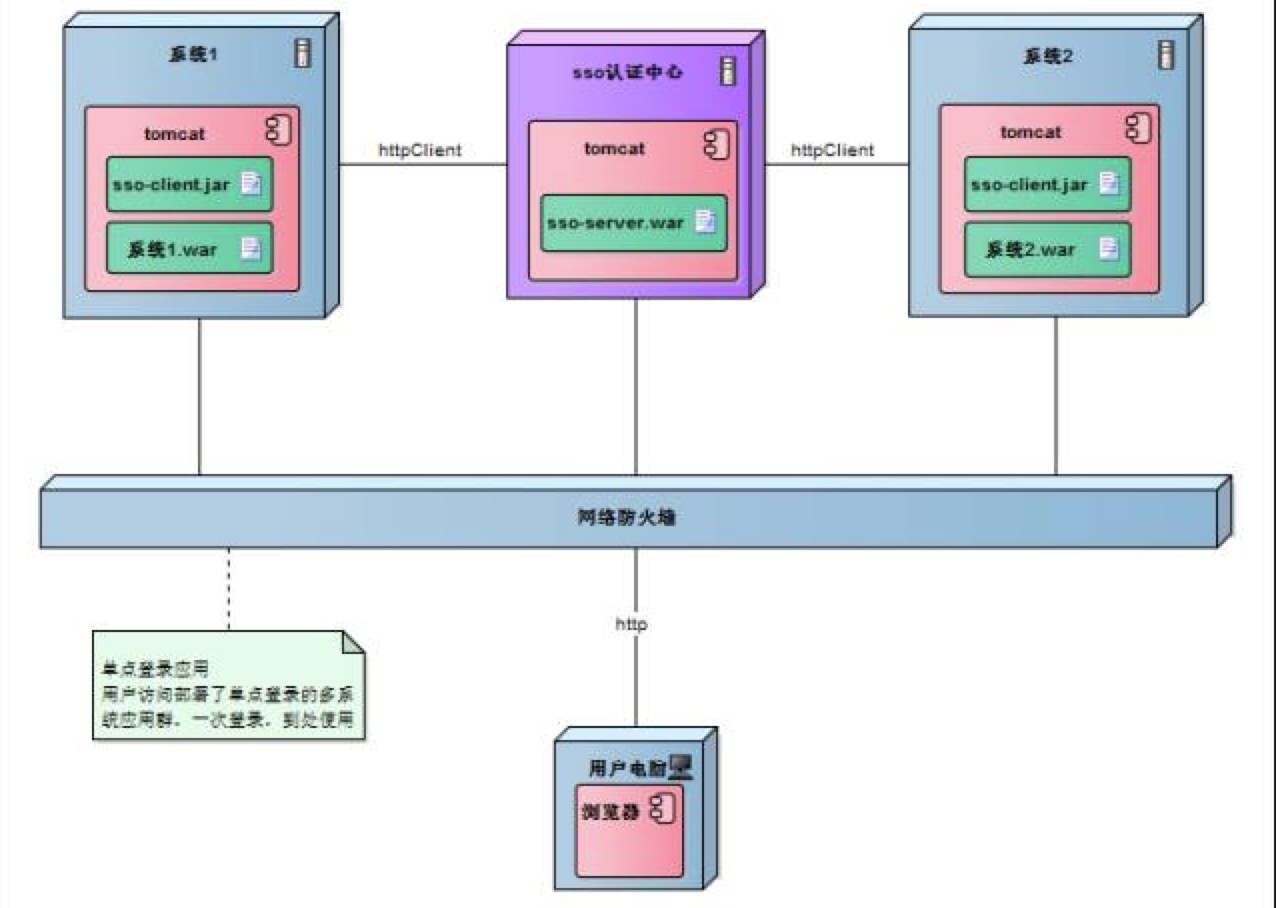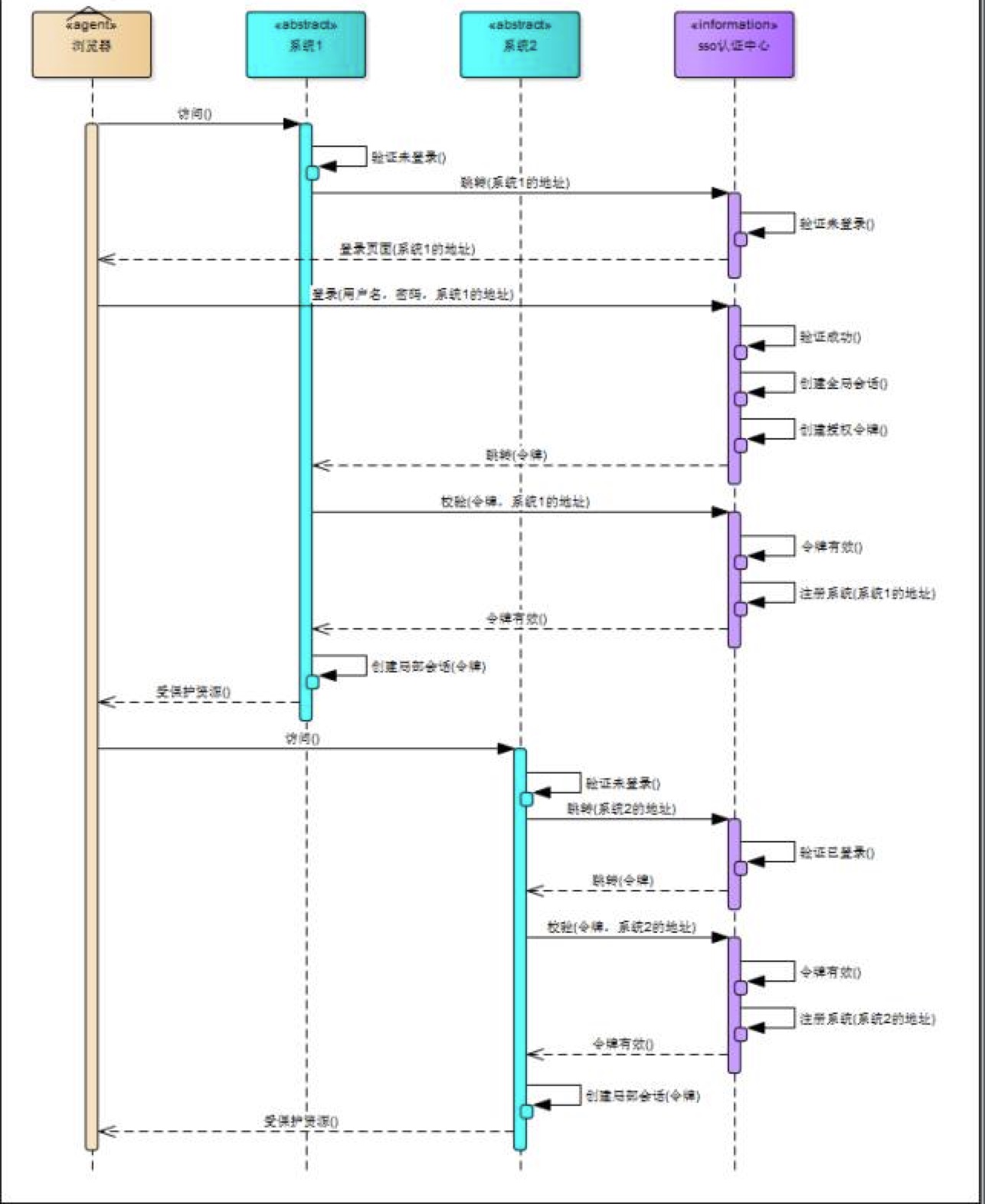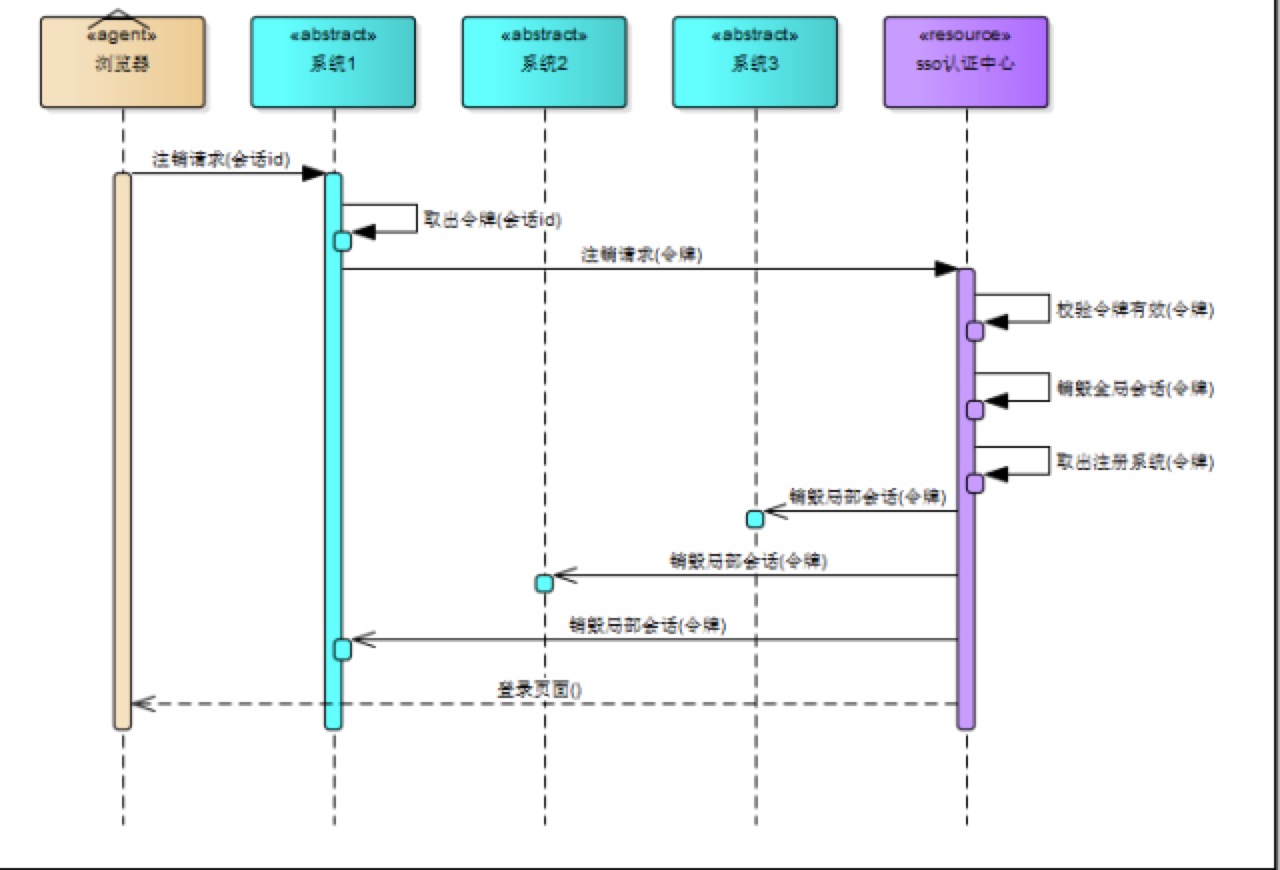Dubbo Shiro 管理
Dubbo Shiro 配置
此工程是使用Shiro 作为安全框架,使用Shiro来管理路由的访问权限和作用域
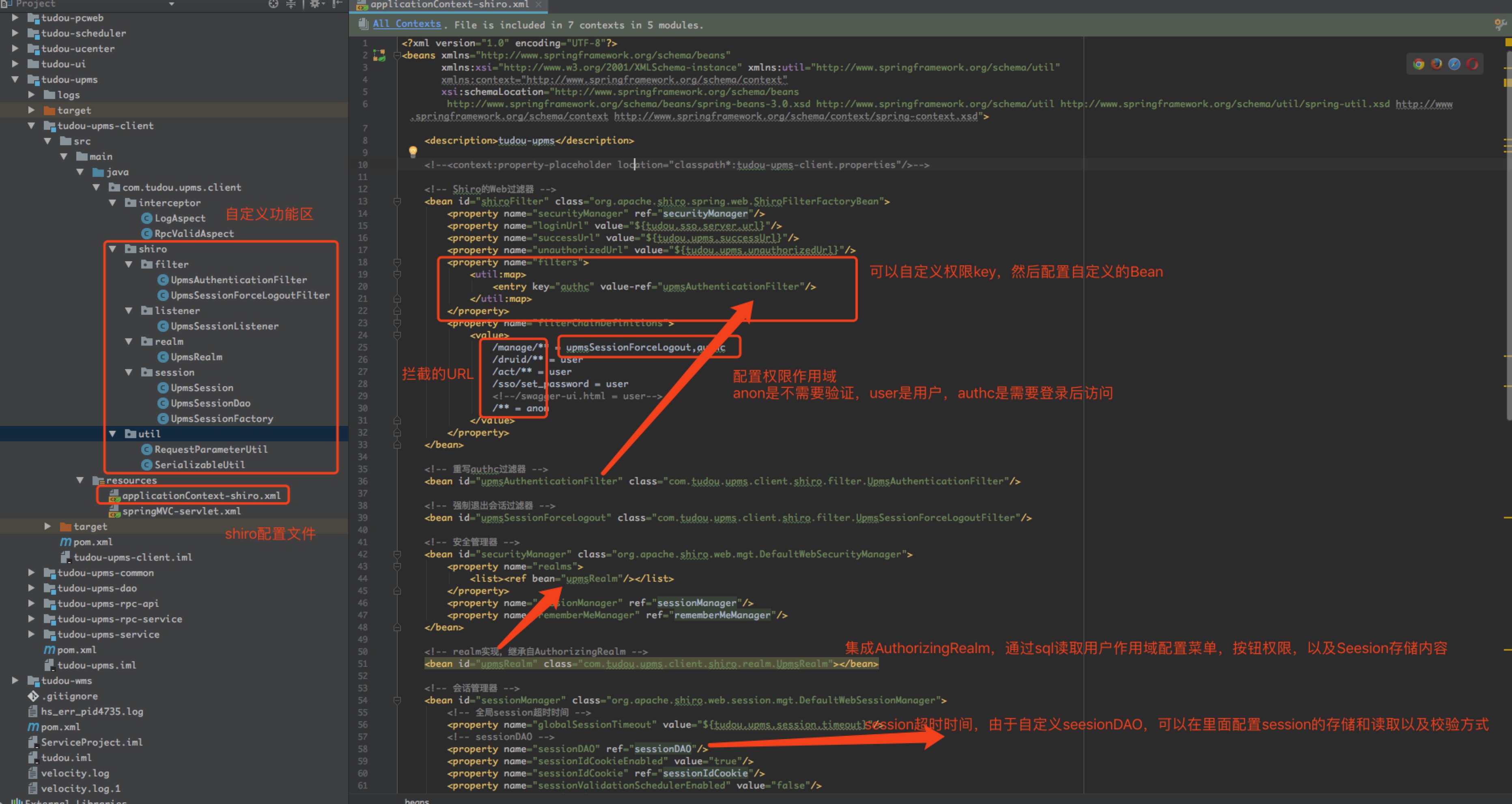
<?xml version="1.0" encoding="UTF-8"?>
<beans xmlns="http://www.springframework.org/schema/beans"
xmlns:xsi="http://www.w3.org/2001/XMLSchema-instance" xmlns:util="http://www.springframework.org/schema/util"
xmlns:context="http://www.springframework.org/schema/context"
xsi:schemaLocation="http://www.springframework.org/schema/beans
http://www.springframework.org/schema/beans/spring-beans-3.0.xsd http://www.springframework.org/schema/util http://www.springframework.org/schema/util/spring-util.xsd http://www.springframework.org/schema/context http://www.springframework.org/schema/context/spring-context.xsd">
<description>tudou-upms</description>
<!-- Shiro的Web过滤器 -->
<bean id="shiroFilter" class="org.apache.shiro.spring.web.ShiroFilterFactoryBean">
<property name="securityManager" ref="securityManager"/>
<!-- Shiro 认证中心地址 -->
<property name="loginUrl" value="${tudou.sso.server.url}"/>
<!-- Shiro 登录成功回调-->
<property name="successUrl" value="${tudou.upms.successUrl}"/>
<!-- Shiro 未授权回调地址-->
<property name="unauthorizedUrl" value="${tudou.upms.unauthorizedUrl}"/>
<property name="filters">
<util:map>
<!-- 自定义Shiro 过滤器-->
<entry key="authc" value-ref="upmsAuthenticationFilter"/>
</util:map>
</property>
<property name="filterChainDefinitions">
<value>
<!-- 过滤路由地址-和过滤器 -->
/manage/** = upmsSessionForceLogout,authc
/druid/** = user
/act/** = user
/sso/set_password = user
<!--/swagger-ui.html = user-->
/** = anon
</value>
</property>
</bean>
<!-- 重写authc过滤器 -->
<bean id="upmsAuthenticationFilter" class="com.tudou.upms.client.shiro.filter.UpmsAuthenticationFilter"/>
<!-- 强制退出会话过滤器 -->
<bean id="upmsSessionForceLogout" class="com.tudou.upms.client.shiro.filter.UpmsSessionForceLogoutFilter"/>
<!-- 安全管理器 -->
<bean id="securityManager" class="org.apache.shiro.web.mgt.DefaultWebSecurityManager">
<property name="realms">
<list><ref bean="upmsRealm"/></list>
</property>
<property name="sessionManager" ref="sessionManager"/>
<property name="rememberMeManager" ref="rememberMeManager"/>
</bean>
<!-- realm实现,继承自AuthorizingRealm -->
<bean id="upmsRealm" class="com.tudou.upms.client.shiro.realm.UpmsRealm"></bean>
<!-- 会话管理器 -->
<bean id="sessionManager" class="org.apache.shiro.web.session.mgt.DefaultWebSessionManager">
<!-- 全局session超时时间 -->
<property name="globalSessionTimeout" value="${tudou.upms.session.timeout}"/>
<!-- sessionDAO -->
<property name="sessionDAO" ref="sessionDAO"/>
<!-- Session Id Cookie 是否启动 -->
<property name="sessionIdCookieEnabled" value="true"/>
<!-- Session Id Cookie 配置 -->
<property name="sessionIdCookie" ref="sessionIdCookie"/>
<!-- 是否开启会话验证器 -->
<property name="sessionValidationSchedulerEnabled" value="false"/>
<property name="sessionListeners">
<list><ref bean="sessionListener"/></list>
</property>
<property name="sessionFactory" ref="sessionFactory"/>
</bean>
<!-- 会话DAO,可重写,持久化session -->
<bean id="sessionDAO" class="com.tudou.upms.client.shiro.session.UpmsSessionDao"/>
<!-- 会话Cookie模板 -->
<bean id="sessionIdCookie" class="org.apache.shiro.web.servlet.SimpleCookie">
<!-- 不会暴露给客户端 -->
<property name="httpOnly" value="true"/>
<!-- 设置Cookie的过期时间,秒为单位,默认-1表示关闭浏览器时过期Cookie -->
<property name="maxAge" value="-1"/>
<!-- Cookie名称 -->
<property name="name" value="${tudou.upms.session.id}"/>
</bean>
<!-- 会话监听器 -->
<bean id="sessionListener" class="com.tudou.upms.client.shiro.listener.UpmsSessionListener"/>
<!-- session工厂 -->
<bean id="sessionFactory" class="com.tudou.upms.client.shiro.session.UpmsSessionFactory"/>
<!-- rememberMe管理器 -->
<bean id="rememberMeManager" class="org.apache.shiro.web.mgt.CookieRememberMeManager">
<!-- rememberMe cookie加密的密钥 建议每个项目都不一样 默认AES算法 密钥长度(128 256 512 位)-->
<property name="cipherKey" value="#{T(org.apache.shiro.codec.Base64).decode('4AvVhmFLUs0KTA3Kprsdag==')}"/>
<property name="cookie" ref="rememberMeCookie"/>
</bean>
<!-- rememberMe缓存cookie -->
<bean id="rememberMeCookie" class="org.apache.shiro.web.servlet.SimpleCookie">
<constructor-arg value="rememberMe"/>
<!-- 不会暴露给客户端 -->
<property name="httpOnly" value="true"/>
<!-- 记住我cookie生效时间 -->
<property name="maxAge" value="${tudou.upms.rememberMe.timeout}"/>
</bean>
<!-- 设置SecurityUtils,相当于调用SecurityUtils.setSecurityManager(securityManager) -->
<bean class="org.springframework.beans.factory.config.MethodInvokingFactoryBean">
<property name="staticMethod" value="org.apache.shiro.SecurityUtils.setSecurityManager"/>
<property name="arguments" ref="securityManager"/>
</bean>
<!-- 开启Shiro Spring AOP权限注解@RequiresPermissions的支持 -->
<bean class="org.springframework.aop.framework.autoproxy.DefaultAdvisorAutoProxyCreator" depends-on="lifecycleBeanPostProcessor"/>
<bean class="org.apache.shiro.spring.security.interceptor.AuthorizationAttributeSourceAdvisor">
<property name="securityManager" ref="securityManager"/>
</bean>
<!-- Shiro生命周期处理器-->
<bean id="lifecycleBeanPostProcessor" class="org.apache.shiro.spring.LifecycleBeanPostProcessor"/>
</beans>
主要看一下SeesionDao是如何存储和读取seesion
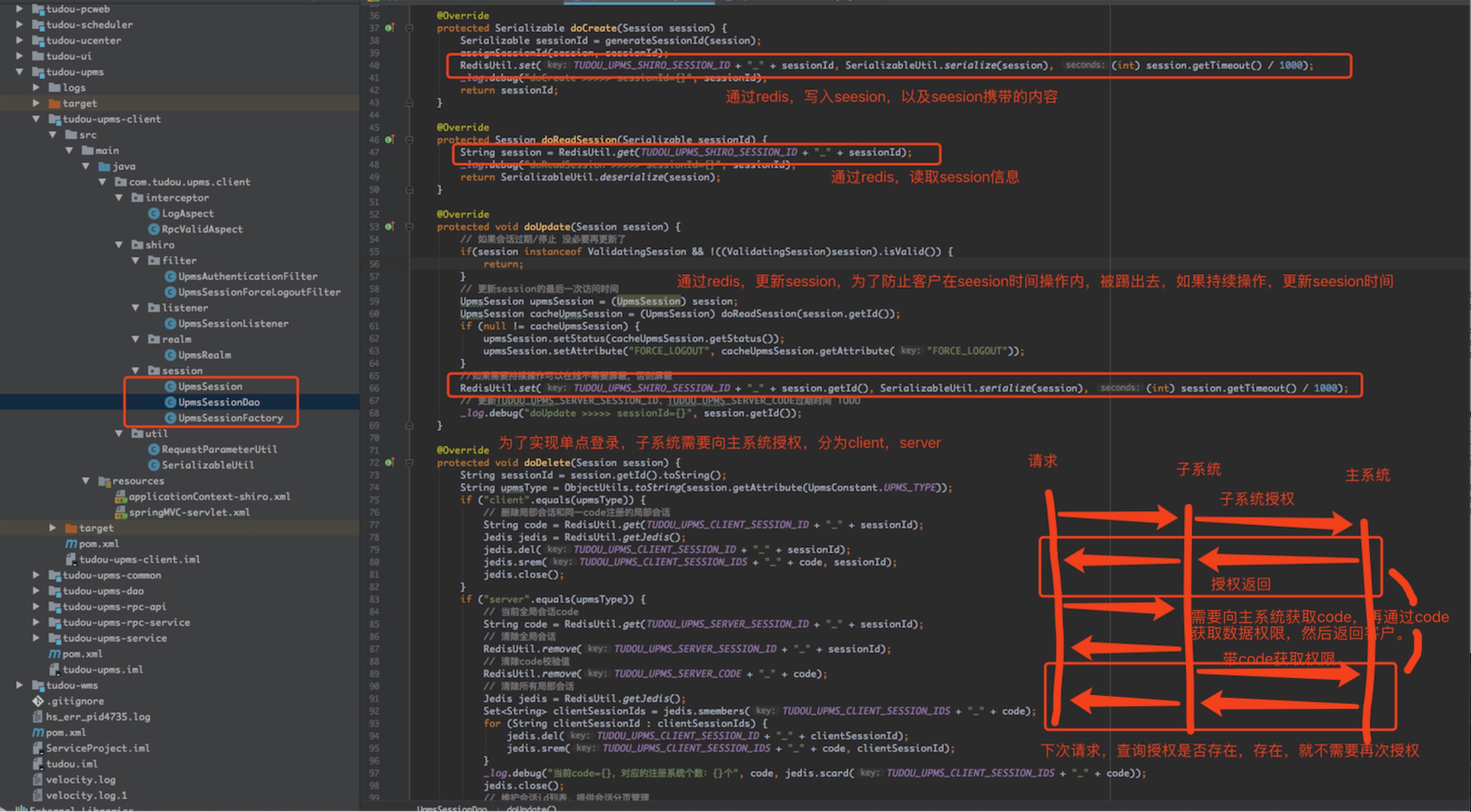
/**
* 登录时创建Session
* @param session
* @return
*/
@Override
protected Serializable doCreate(Session session) {
Serializable sessionId = generateSessionId(session);
assignSessionId(session, sessionId);
RedisUtil.set(TUDOU_UPMS_SHIRO_SESSION_ID + "_" + sessionId, SerializableUtil.serialize(session), (int) session.getTimeout() / 1000);
_log.debug("doCreate >>>>> sessionId={}", sessionId);
return sessionId;
}
/**
* 读取Session
* @param session
* @return
*/
@Override
protected Session doReadSession(Serializable sessionId) {
String session = RedisUtil.get(TUDOU_UPMS_SHIRO_SESSION_ID + "_" + sessionId);
_log.debug("doReadSession >>>>> sessionId={}", sessionId);
return SerializableUtil.deserialize(session);
}
/**
* 更新Session
* @param session
* @return
*/
@Override
protected void doUpdate(Session session) {
// 如果会话过期/停止 没必要再更新了
if(session instanceof ValidatingSession && !((ValidatingSession)session).isValid()) {
return;
}
// 更新session的最后一次访问时间
UpmsSession upmsSession = (UpmsSession) session;
UpmsSession cacheUpmsSession = (UpmsSession) doReadSession(session.getId());
if (null != cacheUpmsSession) {
upmsSession.setStatus(cacheUpmsSession.getStatus());
upmsSession.setAttribute("FORCE_LOGOUT", cacheUpmsSession.getAttribute("FORCE_LOGOUT"));
}
//如果需要持续操作可以在线不需要屏蔽,否则屏蔽
RedisUtil.set(TUDOU_UPMS_SHIRO_SESSION_ID + "_" + session.getId(), SerializableUtil.serialize(session), (int) session.getTimeout() / 1000);
// 更新TUDOU_UPMS_SERVER_SESSION_ID、TUDOU_UPMS_SERVER_CODE过期时间 TODO
_log.debug("doUpdate >>>>> sessionId={}", session.getId());
}
/**
* 删除Session
* @param session
* @return
*/
@Override
protected void doDelete(Session session) {
String sessionId = session.getId().toString();
String upmsType = ObjectUtils.toString(session.getAttribute(UpmsConstant.UPMS_TYPE));
if ("client".equals(upmsType)) {
// 删除局部会话和同一code注册的局部会话
String code = RedisUtil.get(TUDOU_UPMS_CLIENT_SESSION_ID + "_" + sessionId);
Jedis jedis = RedisUtil.getJedis();
jedis.del(TUDOU_UPMS_CLIENT_SESSION_ID + "_" + sessionId);
jedis.srem(TUDOU_UPMS_CLIENT_SESSION_IDS + "_" + code, sessionId);
jedis.close();
}
if ("server".equals(upmsType)) {
// 当前全局会话code
String code = RedisUtil.get(TUDOU_UPMS_SERVER_SESSION_ID + "_" + sessionId);
// 清除全局会话
RedisUtil.remove(TUDOU_UPMS_SERVER_SESSION_ID + "_" + sessionId);
// 清除code校验值
RedisUtil.remove(TUDOU_UPMS_SERVER_CODE + "_" + code);
// 清除所有局部会话
Jedis jedis = RedisUtil.getJedis();
Set<String> clientSessionIds = jedis.smembers(TUDOU_UPMS_CLIENT_SESSION_IDS + "_" + code);
for (String clientSessionId : clientSessionIds) {
jedis.del(TUDOU_UPMS_CLIENT_SESSION_ID + "_" + clientSessionId);
jedis.srem(TUDOU_UPMS_CLIENT_SESSION_IDS + "_" + code, clientSessionId);
}
_log.debug("当前code={},对应的注册系统个数:{}个", code, jedis.scard(TUDOU_UPMS_CLIENT_SESSION_IDS + "_" + code));
jedis.close();
// 维护会话id列表,提供会话分页管理
RedisUtil.lrem(TUDOU_UPMS_SERVER_SESSION_IDS, 1, sessionId);
}
// 删除session
RedisUtil.remove(TUDOU_UPMS_SHIRO_SESSION_ID + "_" + sessionId);
_log.debug("doUpdate >>>>> sessionId={}", sessionId);
}
/**
* 获取会话列表
* @param offset
* @param limit
* @return
*/
public Map getActiveSessions(int offset, int limit) {
Map sessions = new HashMap();
Jedis jedis = RedisUtil.getJedis();
// 获取在线会话总数
long total = jedis.llen(TUDOU_UPMS_SERVER_SESSION_IDS);
// 获取当前页会话详情
List<String> ids = jedis.lrange(TUDOU_UPMS_SERVER_SESSION_IDS, offset, (offset + limit - 1));
List<Session> rows = new ArrayList<>();
for (String id : ids) {
String session = RedisUtil.get(TUDOU_UPMS_SHIRO_SESSION_ID + "_" + id);
// 过滤redis过期session
if (null == session) {
RedisUtil.lrem(TUDOU_UPMS_SERVER_SESSION_IDS, 1, id);
total = total - 1;
continue;
}
rows.add(SerializableUtil.deserialize(session));
}
jedis.close();
sessions.put("total", total);
sessions.put("data", rows);
return sessions;
}
/**
* 强制退出
* @param ids
* @return
*/
public int forceout(String ids) {
String[] sessionIds = ids.split(",");
for (String sessionId : sessionIds) {
// 会话增加强制退出属性标识,当此会话访问系统时,判断有该标识,则退出登录
String session = RedisUtil.get(TUDOU_UPMS_SHIRO_SESSION_ID + "_" + sessionId);
UpmsSession upmsSession = (UpmsSession) SerializableUtil.deserialize(session);
upmsSession.setStatus(UpmsSession.OnlineStatus.force_logout);
upmsSession.setAttribute("FORCE_LOGOUT", "FORCE_LOGOUT");
RedisUtil.set(TUDOU_UPMS_SHIRO_SESSION_ID + "_" + sessionId, SerializableUtil.serialize(upmsSession), (int) upmsSession.getTimeout() / 1000);
}
return sessionIds.length;
}
/**
* 更改在线状态
*
* @param sessionId
* @param onlineStatus
*/
public void updateStatus(Serializable sessionId, UpmsSession.OnlineStatus onlineStatus) {
UpmsSession session = (UpmsSession) doReadSession(sessionId);
if (null == session) {
return;
}
session.setStatus(onlineStatus);
RedisUtil.set(TUDOU_UPMS_SHIRO_SESSION_ID + "_" + session.getId(), SerializableUtil.serialize(session), (int) session.getTimeout() / 1000);
}
Dubbo Shiro Session 授权方式
系统和授权中心的数据权限方式-单点登录
